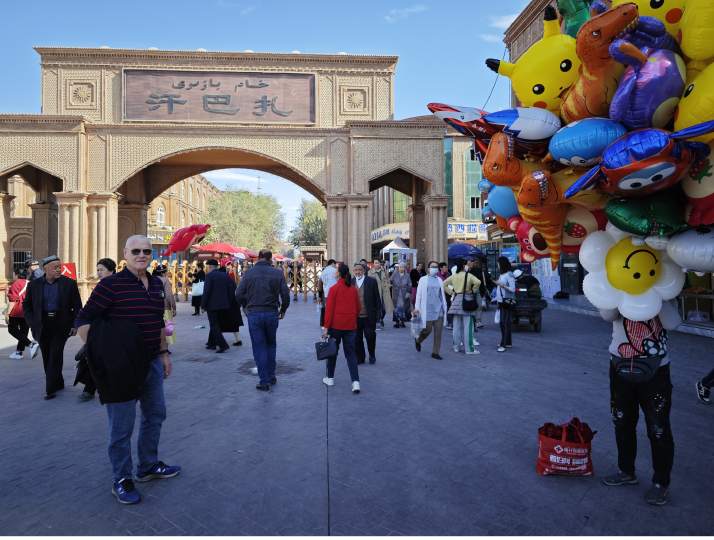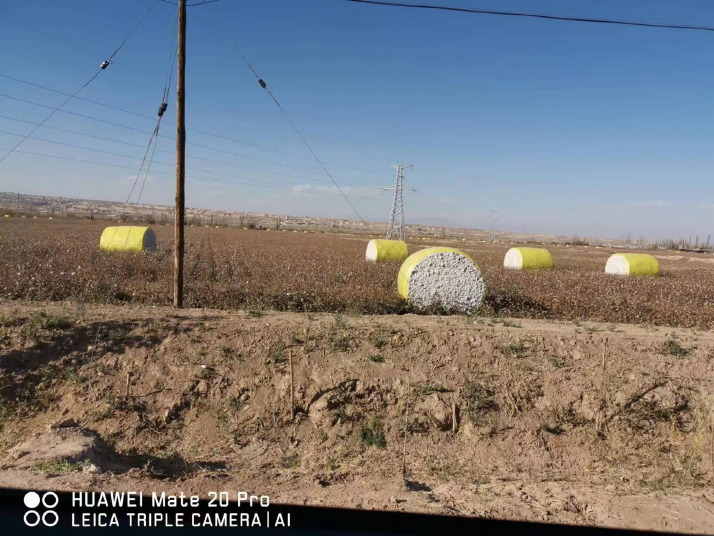
Xinjiang Uygur Autonomous Region is characterized by grasslands, deserts, and mountains, traditionally used for modest agricultural purposes. As a result, the wealth and education levels of the population were far below those of other regions in China, particularly compared to the industrial provinces in the country’s east along the coasts. To address these disparities in wealth and to exploit local natural resources, significant investments were made in industrial development, infrastructure and agriculture starting in the 1980s and 1990s.
During the 1990s and the early 2000s, Xinjiang was often plagued by terrorist attacks. The Chinese Government sought to counteract this with a comprehensive package of measures. On the one hand, it aimed to increase prosperity and overcome poverty through extensive investments in infrastructure, as well as industrial and agricultural development, while also expanding the education system. On the other hand, police presence was significantly increased to combat separatist and terrorist activities.
To gain firsthand insight into today’s Xinjiang, I decided to use my planned family visit to China in October and November 2023 to make a side trip to the region.
At the visa center in Berlin, the officer confirmed that I didn’t need any special permit; my visa would be sufficient. Skeptical, I double-checked during my registration at the local police station in Tongzhou District, Beijing. They assured me there as well that no special permissions were necessary—unless I wanted to visit the border regions near Afghanistan or Pakistan. I pretended that I wanted to do just that. At the central registration office of the district, after a brief introduction to the digital administration terminal, scanning my passport, visa and taking the obligatory digital photo, I received a small certificate permitting me to travel to all counties in Xinjiang. No restrictions on the purpose of my trip!

Exploring Kashi
Upon arriving in Kashi (Kashgar), I encountered two further surprises: At the airport, there were no security personnel—neither inside the airport nor outside when picking up the rental car. At the hotel, however, a “security officer” did appear: the hotel’s doorman. He cheerfully took our suitcases, escorted us to the reception desk, and later even carried the luggage to our room. His equipment—shield and helmet—was casually leaning in a forgotten corner of the lobby.
On the first day, we visited the old town and the famous Kashi bazaar. For visitors, it’s almost mandatory to try Xinjiang’s signature dishes, such as Jiaomaji (pepper chicken), Dapanji (chicken with noodles), and especially Zhuafan (pilaf, or rice with lamb eaten with your hands). These dishes, with their strong spices, take some getting used to. You need to try them several times before fully appreciating their flavors. In the evening, some streets in the old town transformed into restaurant and bar areas. There was pop music performed by groups from different ethnicities. Tourists and locals mingled freely, creating a pleasant and welcoming atmosphere.
For a long time, I’ve been captivated by Buddhist culture in China. Whenever I visit the country, I make sure not to miss the opportunity to explore Buddhist sites and cultural relics. Naturally, this “must-see” was part of my itinerary this time as well. On the second day, we took a trip to the ruins of the Mo’er Temple, located about 30 km outside downtown Kashi in a rocky desert. The temple ruins were where we encountered a group of strikingly beautiful Uygur women—dancers from a professional dance troupe on a sightseeing trip. Photos were a must, and we had plenty of conversations.
These women had grown up in the Kashi region and, after finishing middle school, attended a professional dance school specializing in traditional dances. In their stories, I sensed no hesitation about speaking openly with a Western foreigner. They talked about their bilingual childhoods and the discussions within their families about the new era of high educational demands and industrialization. Many older people, they said, didn’t quite understand all these changes.
The digital age has even reached the livestock market in Kashi. I’ve seen livestock markets in India and Mongolia, but this one surprised me. All kinds of livestock, with many sub-breeds, were available: sheep, goats, cattle of all types, yaks, horses—including racehorses and draft horses—and camels. They had almost everything. Trading was conducted as it might have been 1,000 years ago—with bargaining, arguing, shouting and laughing—and then a handshake sealed the deal.
What followed was remarkable: The buyer and seller reached for their smartphones and completed the transaction using QR codes. Access to 4G or 5G networks was commonplace here. Cash was hardly visible, but there were plenty of happy faces.

Journey to the border region
On our road trip to the border region of Tashikuergan (Taxkorgan or Tashkurgan) County, which borders Tajikistan, Afghanistan and Pakistan, and where the Tajik minority predominantly resides, we passed through a checkpoint resembling a toll station. Upon entering, a loudspeaker (unfortunately only in standard Chinese) instructed us to roll down the windows and look into the cameras. Since I didn’t understand the instructions and was driving, I was stopped. My travel companion translated the directive for me: Roll down the windows and look into the side cameras.
After a brief glance into the cameras, we were allowed to proceed. This was facial recognition technology, which matched my passport and visa data. The same procedure applied to all travelers, regardless of ethnicity or nationality, using their ID cards.
This was the only checkpoint we encountered during our four-day stay in this border region. Hotel registration, as in many parts of the world, involved a digital check-in process, including photos—entirely paperless.
In 2013, Chinese President Xi Jinping introduced the Belt and Road Initiative, which aims to boost connectivity along and beyond the ancient Silk Road routes, to the world. During my trip, I gained a deeper understanding of the significance of this massive project, particularly in Tashikuergan, where we briefly stayed.
This town was, for over 2,000 years, the central starting point of the historic Silk Road crossing the Pamir Mountains. Here, caravans of traders rested with their camels and precious goods from China, as well as goods coming from the opposite direction—from Central Asia and Europe. During the Tang Dynasty (618-907), Chinese monk Xuanzang, who played a crucial role in spreading Buddhism in China, also taught in this city. It is truly a site of great historical significance, comparable to Greek or Roman landmarks.
Today, Tashikuergan is a major tourist attraction. With growing awareness of the Silk Road as China’s ancient connection to the world, tourist interest has surged. Even before the COVID-19 pandemic, visitors flocked to Tashikuergan, triggering a construction boom. A new museum, hotels and restaurants have opened.
The benefits extend beyond tourists to the local population. Restaurants offer local specialties, such as hotpot with yak meat, which is a must-try here. One evening, we had the opportunity to learn more about the region’s rapid development. In conversations, we heard that the influx of tourism businesses has created many opportunities for the local population—jobs in restaurants and hotels, positions as tour guides, and even new roles in kindergartens and schools that have recently opened. Life in this area has changed significantly over the past decade.
Seeing is believing
The villages we passed through during our travels across the autonomous region all gave the impression of secured prosperity. Solid houses in good condition with electricity, cows, sheep and horses grazing in the fields, and tractors, motorcycles and electric scooters parked in front. Poverty and backwardness look very different. I saw those 30 or even 20 years ago.
I remembered rural Xinjiang as a backward region with poor roads, impoverished villages, and many camels, horses and donkeys. No tourists, no hotels. However, the past few decades have brought about a dramatic transformation.
I observed no signs of repression of any minority, including the Uygurs, during the entire journey. On the contrary, I saw content people, new residential areas, hospitals, schools and kindergartens, and modern factories.
To all journalists in the West, I can only recommend taking a trip to Xinjiang themselves and forming their own impressions firsthand. –The Daily Mail-Beijing Review news exchange item





